Boom Cylinder For Kato Small Excavator HD250
Som en af producenterne, leverandørerne og eksportørerne af mekaniske produkter tilbyder vi hydrauliske cylindre og mange andre produkter.
Kontakt os for yderligere oplysninger.
Mail:sales@hydraulic-cylinders.net
Producent, leverandør og eksportør af hydrauliske cylindre.
Boom Cylinder For Kato Small Excavator HD250
Product Overview
The boom cylinder for the Kato small excavator HD250 is a crucial component in hydraulic systems, specifically designed to manage the movement of the bucket in heavy machinery. As a type of hydraulic cylinder, it plays a vital role in controlling various functions such as lifting, lowering, and tilting the excavator’s bucket, thereby facilitating efficient material handling tasks.
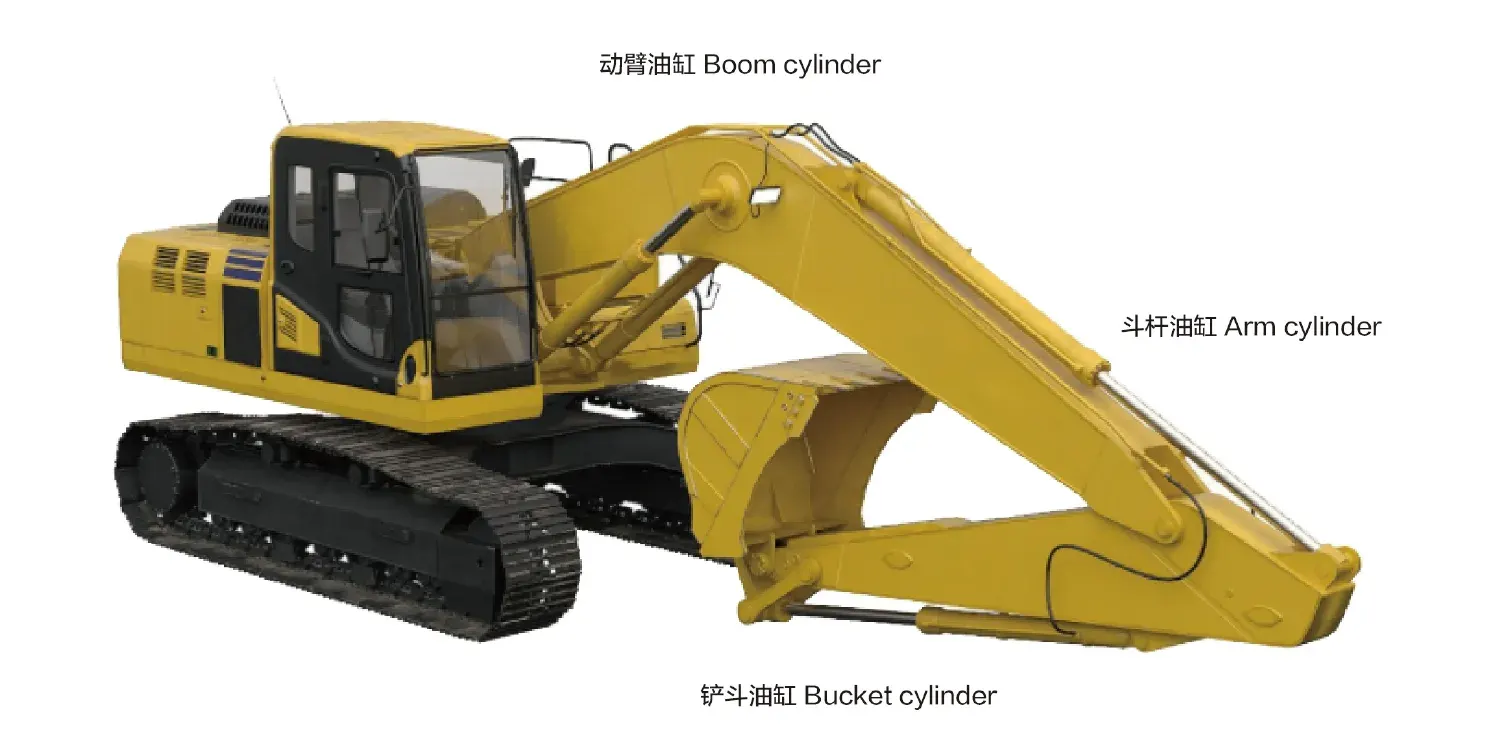
What is a Bucket Cylinder?
A bucket cylinder is a hydraulic cylinder specially designed for controlling the motion of buckets in heavy equipment like excavators, backhoes, and front loaders. It enables the bucket to lift, lower, and tilt, making it essential for tasks involving the movement of soil, debris, or other materials. Within hydraulic systems, bucket cylinders are responsible for converting hydraulic pressure into linear motion, effectively allowing for precision in operation. This makes them indispensable in construction sites and various industrial applications.
Features of the Boom Cylinder
- High Strength and Durability: Typically made from high-strength steel or aluminum, these cylinders withstand high pressure and heavy loads, making them suitable for harsh working environments. The design considers wear resistance and corrosion resistance, extending their lifespan.
- Efficient Hydraulic Operation: Utilizing hydraulic oil pressure, the boom cylinder achieves smooth extension and retraction, quickly responding to control commands and providing strong pushing and pulling force, ideal for handling heavy and complex tasks.
- Variety of Types: Available in single-acting (uses hydraulic in one direction) or double-acting (uses hydraulic in both directions), these cylinders cater to different operational needs. Some models are telescopic, allowing greater extension without increasing external dimensions, suitable for space-constrained applications.
- Custom Manufacturing: We produce this product to perfectly replace various hydraulic cylinders, ensuring compatibility and reliability for different machinery.
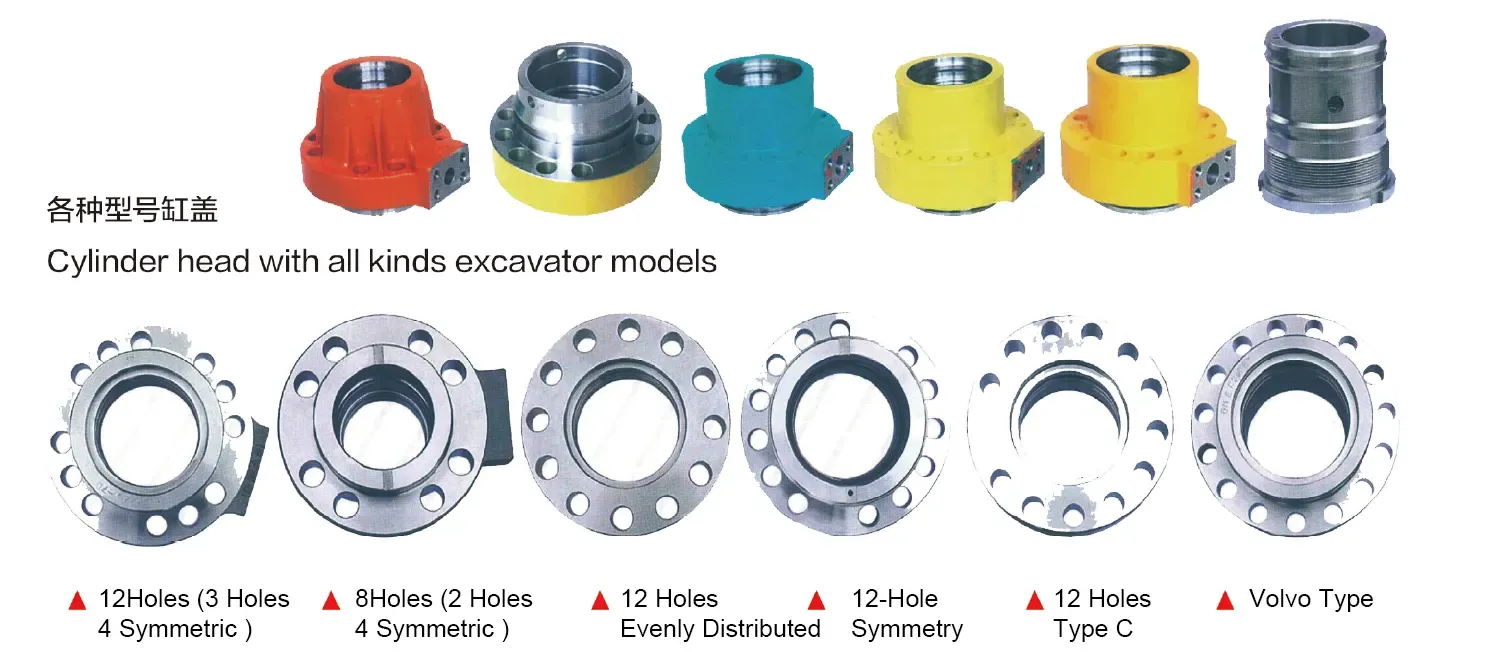
Applications of the Boom Cylinder
Construction Equipment
In excavators, boom cylinders play a vital role in digging, loading, and moving dirt or debris. They enable the bucket to penetrate the ground, making it essential for excavation tasks. Additionally, in backhoes, the boom cylinder assists in both digging and lifting, providing versatility on construction sites.
Agricultural Machinery
In front-end loaders, boom cylinders are crucial for scooping, lifting, and transporting soil, hay, and other materials. They allow operators to efficiently manage agricultural tasks, increasing productivity and reducing labor intensity.
Excavators
Boom cylinders enable the digging action in excavators by allowing the bucket to penetrate the soil effectively, which is essential for various excavation projects. Their hydraulic force ensures that digging activities are performed swiftly and efficiently.
Loaders
In front loaders, boom cylinders assist in lifting and dumping loads, enhancing operational efficiency. They enable smooth and powerful movements, essential for transporting materials across job sites.
Design Considerations
Load Capacity
The load capacity of the boom cylinder is critical for ensuring the safe and effective operation of heavy machinery. It must be designed to handle the maximum load expected in operational scenarios, providing sufficient safety margins to prevent failures during use. Engineers must calculate the anticipated loads accurately, factoring in dynamic conditions that may arise during operation.
Sealing
Effective sealing is essential to prevent hydraulic fluid leaks, which can compromise the efficiency of the hydraulic system. High-quality seals made from durable materials, such as polyurethane and nitrile rubber, ensure long-lasting performance. Regular maintenance and timely replacement of seals are crucial to maintaining operational integrity and reducing downtime.
Durability
The durability of boom cylinders is influenced by the materials used and the manufacturing process. High-strength materials coupled with advanced manufacturing techniques result in cylinders capable of withstanding extreme conditions. This durability extends the product’s lifespan and reduces the frequency of replacements, leading to cost savings for operators.
Safety
Safety features must be integrated into the design of boom cylinders to prevent accidents and ensure operator confidence. This includes implementing fail-safes, pressure relief valves, and robust construction that can withstand unexpected pressures or impacts, thereby enhancing overall safety during operation.
Maintenance
Ease of maintenance is a vital design consideration. Boom cylinders should be designed for straightforward inspection, lubrication, and part replacement. Manufacturers should consider service accessibility to help reduce maintenance time and costs, thereby ensuring that machines remain operational for extended periods.

Sealing and Lubrication
Effective sealing and lubrication are crucial for the proper functioning of boom cylinders. Various seals, such as piston seals and rod seals, are employed to prevent hydraulic fluid leaks. Seals made from wear-resistant materials like polyurethane and nitrile rubber are commonly used due to their durability. The cylinder body and threaded ends are finely processed to enhance wear resistance. It is essential to regularly replenish hydraulic oil to maintain adequate lubrication, thereby preventing friction and wear on moving parts.
Preventive Maintenance Measures
- Regular Inspections: Conducting routine inspections helps identify wear and tear early on, allowing for timely repairs and replacements. Operators should check for leaks, wear on seals, and overall cylinder integrity.
- Appropriate Lubrication: Ensure that the hydraulic system is adequately lubricated. Use the manufacturer’s recommended hydraulic oil and follow the lubrication schedule to maintain optimal performance and prevent damage due to friction.
- Seal Replacement: Regularly inspect seals for signs of wear or damage and replace them as necessary to avoid leaks and maintain system efficiency.
Installation Guidelines
Proper installation of the boom cylinder is essential for optimal performance. Begin by ensuring that the work area is clean and free of debris. Align the boom cylinder accurately with the mounting points, utilizing appropriate mounting brackets to secure it in place. It is crucial to use correct torque specifications when tightening bolts to avoid compromising the cylinder’s integrity. Following installation, check the alignment and operation of the cylinder to ensure it functions smoothly without obstruction. Regularly review installation procedures to enhance performance and safety during operation.
Common Maintenance Tasks
- Regular Inspections: Routine checks for any visible damage or wear on the boom cylinder are essential. This includes examining seals for leaks and ensuring that all fittings are secure and intact.
- Proper Lubrication: It is vital to lubricate the hydraulic system appropriately to reduce friction between moving parts. Follow the manufacturer’s guidelines for lubrication intervals and quantities.
- Seal Replacement and Calibration Checks: Regularly replace worn seals and perform calibration checks to ensure the hydraulic system operates within specified parameters. This helps maintain efficiency and prolongs the lifespan of the equipment.
In the installation process, ensuring proper alignment of the cylinder is crucial. Utilizing suitable mounting brackets will provide stabilizing support for the cylinder. Regular checks and replacement of components will enhance the durability and efficiency of the hydraulic system.
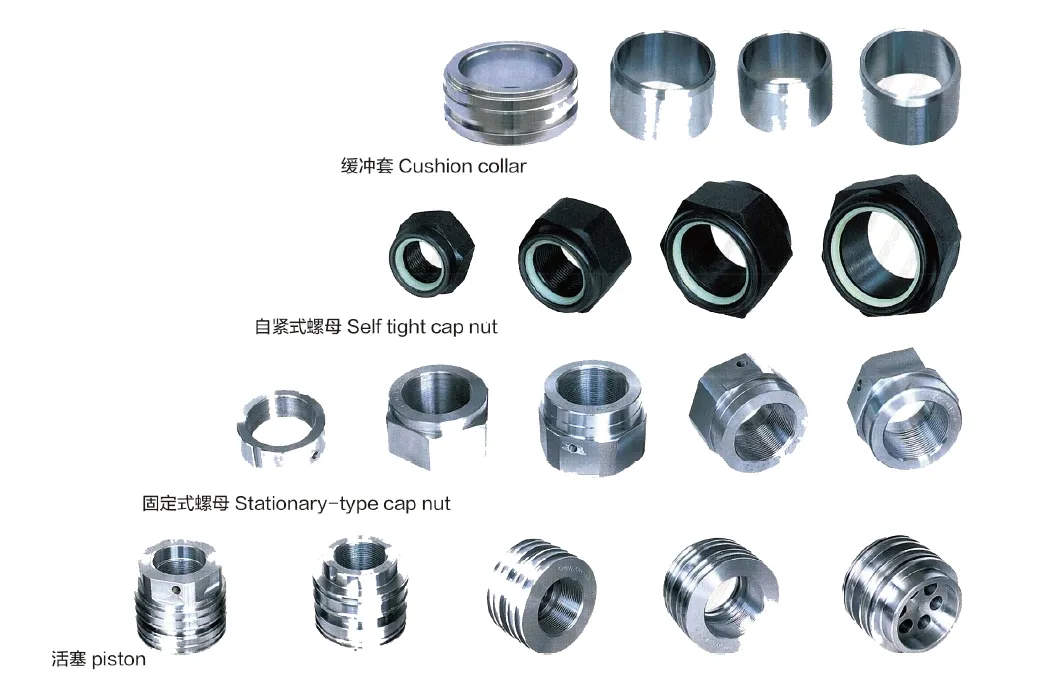
Safety Considerations and Environmental Factors
When using boom cylinders, safety measures are paramount to prevent accidents. Operators should be trained in recognizing potential hazards and implementing safety protocols. Proper personal protective equipment (PPE) must be worn during operation. Additionally, environmental factors, such as exposure to extreme temperatures or corrosive materials, should be considered when selecting materials for boom cylinders to ensure longevity and reliability.
Fault Diagnosis and Common Issues
- Leakage: One of the most common issues with hydraulic cylinders is leakage, often caused by worn seals. Regular inspection can help identify leaks before they lead to significant problems.
- Overheating: Overheating may occur due to low hydraulic fluid levels or excessive load conditions. Monitoring fluid levels and maintaining proper operational loads can help mitigate this issue.
- Erratic Movement: If the boom cylinder operates unevenly or erratically, it could indicate a problem with the hydraulic fluid or internal damage. Checking fluid quality and levels is crucial to maintaining smooth operation.
Troubleshooting Tips and Solutions
To effectively diagnose and resolve issues with boom cylinders, operators should conduct regular maintenance checks. For leakage, inspect seals and replace them as needed. If overheating occurs, assess fluid levels and consider reducing operational loads. In cases of erratic movement, evaluate the hydraulic fluid quality, and check for internal blockages or damages. Preventive measures, such as routine inspections and proper lubrication, are essential to minimize potential problems and ensure smooth operation.
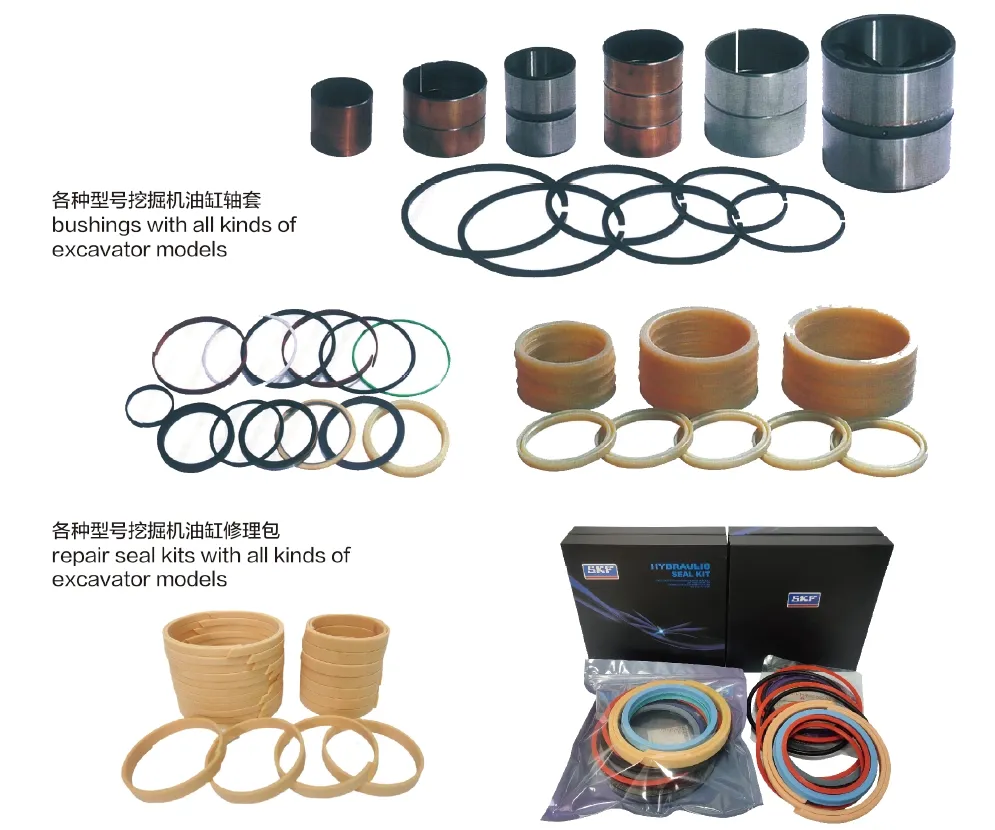
About Our Company
We are a leading manufacturer of replacement hydraulic cylinders, offering a comprehensive range of products that cater to both domestic and international markets. Our commitment to quality excellence is supported by a refined manufacturing strategy, utilizing advanced technology and skilled professionals. We continuously enhance our manufacturing capabilities, ensuring that our products meet high standards of precision and durability.
Specialized Services
- Professional Expertise: Our team consists of skilled professionals who understand the intricacies of hydraulic systems and are committed to delivering superior products.
- International Certifications: We adhere to international standards of quality and safety, ensuring our products are reliable and trustworthy.
- Custom Solutions: We offer tailored solutions to meet specific customer requirements, ensuring that our products fit perfectly in various applications.
- Advanced Equipment: Our state-of-the-art manufacturing equipment allows us to produce high-quality hydraulic cylinders with exceptional efficiency.
- After-Sales Support: We provide comprehensive after-sales services, ensuring customer satisfaction and support long after the purchase.
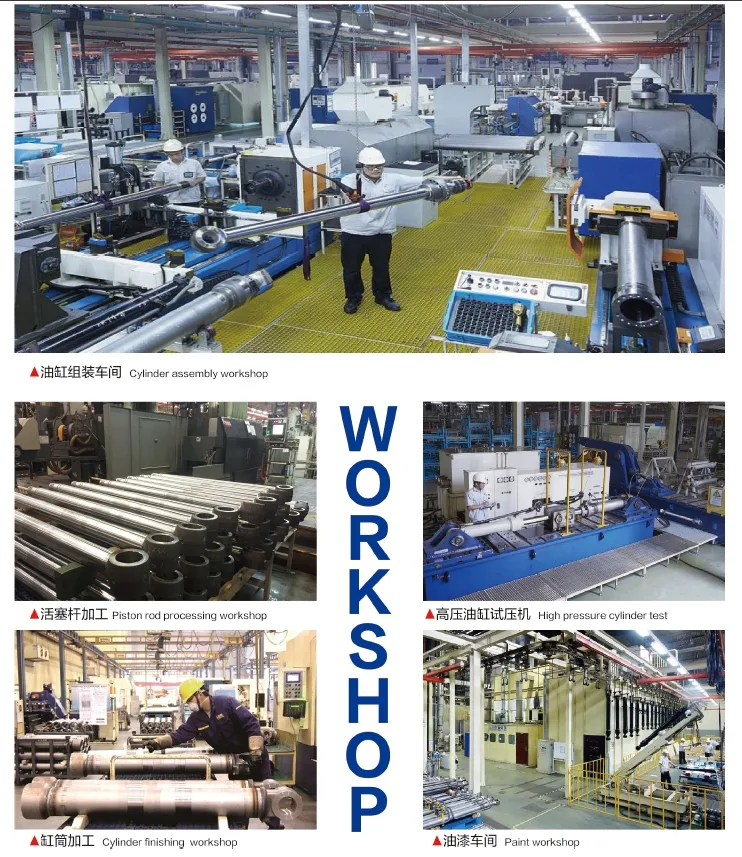
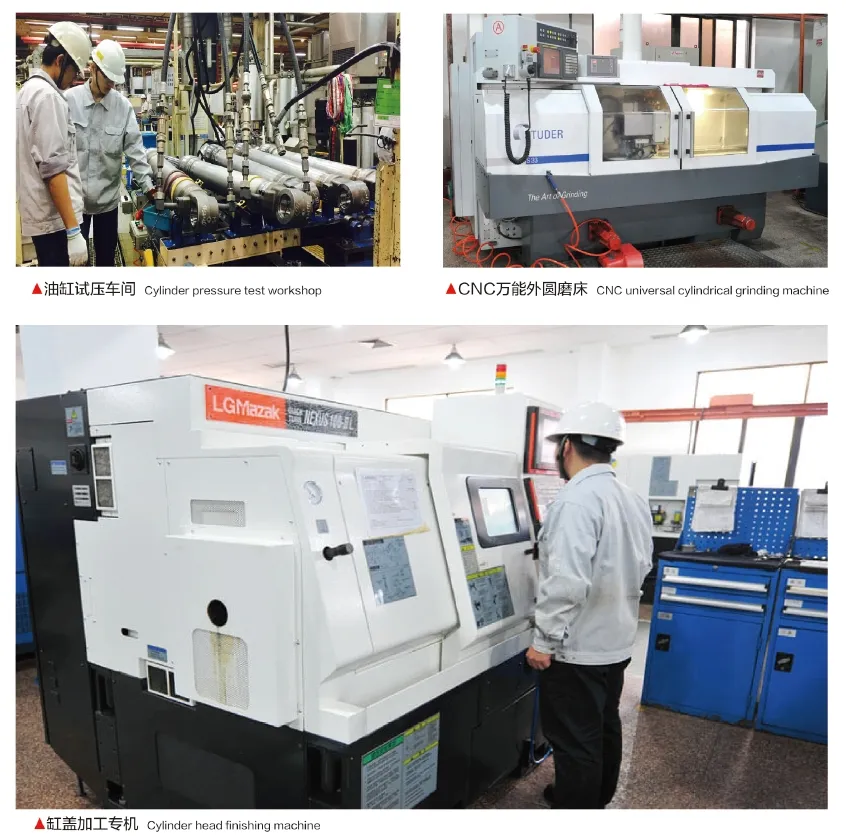
Author: lyl
Take a Tour of Our VR Factory:
Take a tour of our VR factory with the following
Hydraulic Cylinder Application:


